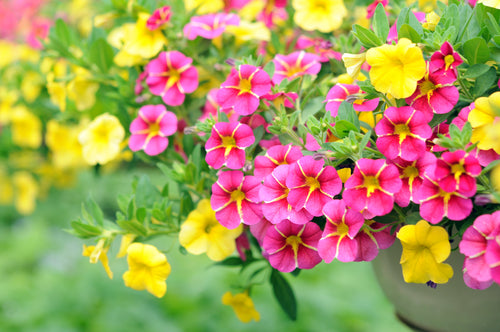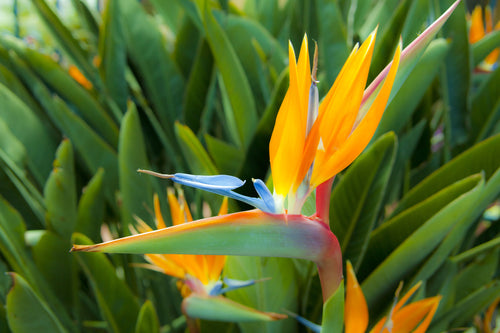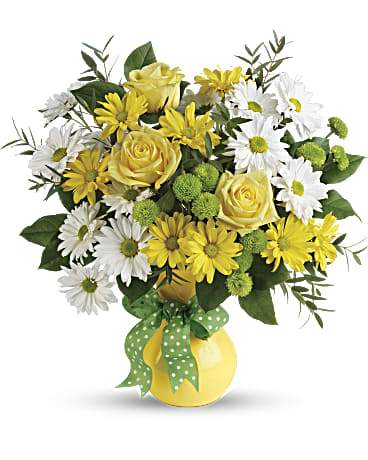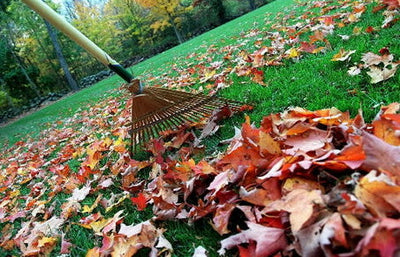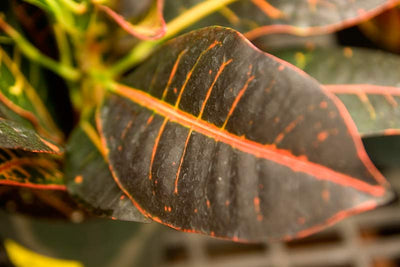EVERGREENS
Keep watering your evergreens until the ground freezes. Evergreens can dry out during the winter. Apply WILT STOP by Bonide which is a natural nontoxic product derived from the resin of pine trees. WILT STOP forms a soft, clear, flexible film on treated plants. This film protects plants from drying out, drought, wind burn, sun scald, winter kill, transplant shock, salt damage, while at the same time allowing them to grow naturally. Apply in the late fall when the temperature is still above freezing. WILT STOP can be used on Boxwoods, Rhododendrons, Azaleas, and other winter sensitive plants. Another form of plant protection is Burlap, 100% natural and biodegradable material. You can use it to wrap trees and shrubs and helps protect these plants against harsh, cold winds, snow, ice melt chemicals.
LAWN
Cut your lawn and clean up the leaves at the end of the season. Adjust your mowers for a final cut of 1½ inches. Resharpen or replace the blade, change the oil, spark plug and air cleaner. Add a fuel stabilizer to your gasoline power tools to assure easy spring start up. Fertilize your lawn if you haven’t already, since this is a very important time to feed, allowing it to winter over. Apply a good quality lawn fertilizer such as Dr. Earth, which is 100% natural, organic and it is perfect for your fall feeding, environmentally friendly, and won’t burn your lawn. This long lasting fertilizer contains slow release nitrogen safe for re-seeding in the fall. You will see a big difference in your lawn next year. If you prefer to use chemical feeding on your lawn we have Jonathan Green Winter Survival, which encourages root growth for winter hardiness and spring green-up. If you want to prevent your lawn from weeds in spring, now is a good time to use Jonathan Green Corn Gluten Meal; the natural herbicide, non-toxic and effective alternative to traditional, chemical-based weed and feed products. For the best results, it should be spread on the lawn twice a year; spring and fall. Corn Gluten Meal works by inhibiting root formations in weeds at the time of germination and control weeds such as crabgrass, creeping bentgrass, smart weed, dandelions, redroot bigweed, purslane, foxtail, barnyard grass, bermuda grass and others. Jonathan Green Corn Gluten Meal kills only the roots of sprouting seeds so it may also be used for weeds control around established plants like perennials, trees, shrubs, in vegetables and flowers beds.
PERENNIALS
Perennial stems should be cut down to the ground after the second hard frost when the leaves turn brown. Some perennials, like coneflowers (Echinacea) and Black Eyed Susan (Rudbeckia) provide seeds for the birds in Winter and do not have to be cut back. Make sure you do a good clean up job and dispose of all debris. Clean garden sanitation practices can reduce the chances of pests and diseases that will affect your plants in the spring. Place mulch around the bases of your perennials. Do not cover the crowns of these plants as this will lead to crown rot if the winter becomes excessively warm. Maintain watering of newly planted perennials, shrubs and trees until the ground freezes. If you disconnected your hoses because of frost, make that extra trip to the laundry room for water. If plants roots dry out, they may not be back next year!
ROSES
Remove the petals from your rose bushes, but leave the rose hips on. Keep watering your roses until the second hard frost. If the rose bush has black spots, you must pick off all the infected leaves and clean up any on the ground. With the change in the weather, POWDERY MILDEW is likely to appear so continue your fungicide spraying program. Around Halloween heavily water your roses. The following day tie the canes together so they will not whip around during winter winds, this will prevent the roots from loosening. Do not cut most rose bushes down, but if the canes of your shrub roses are 10′ to 12′ cut them down to about 5′. After two good frosts, install rose collars and fill with top soil or other mulch like Cotton Burr Compost covering the crowns to prevent winter burn and erosion.
ORCHARD
Clean off and remove all mummified fruit from fruit trees, and rake up leftovers on lawn and dispose of them. Proper sanitation will reduce pests and diseases for next year. Check fruit trees and shrubs for any damaged, diseased or broken branches and dispose. After pruning tree branches, use Bonide’s Pruning Sealer as a protective seal. It can also be used to seal wounds of fruit trees and torn bark. Remember, it is recommended to prune fruit trees when the leaves have fallen off and trees are in a dormant stage. Now is a good time to control Peach Leaf Curl. This disease can be prevented with either Bonide’s Copper Fungicide or Fung-onil. After the leaves have fallen, spray the entire tree and coat all branches, bark and the soil around it. A second application is recommended in spring before buds swell. Also, in late Fall after the leaves have fallen and before the ground freezes it is also a good time to fertilizer fruit trees for an early spring feeding using Espoma Tree-tone. After the leaves fall off, spray the fruit trees with Bonide All-Season Horticultural & Dormant Oil. This organic product will control insects and diseases over winter. In spring, fertilize your fruit trees with Dr. Earth Fruit Fertilizer.



